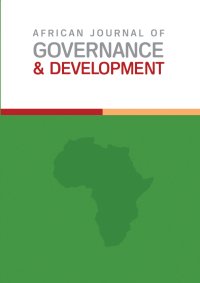Project implementation in a decentralized state: Lessons from the Constituency Development funded food security projects in Kenya
Main Article Content
Abstract
Like many Sub-Saharan African countries, Kenya often encounters incidents of food insecurity particularly in the arid and semi-arid lands like Kitui and Machakos counties. In response to this scenario, the government of Kenya introduced Constituency Development Fund (CDF) in 2003 with a view to improve food security through community based projects. To this effect, there has been an increase in the annual budget allocation to the CDF from Kshs 1.26 billion in 2003/2004 to Kshs 14.3billion in 2010/2011. But despite such an increase, this big investment has shown a serious discord between the project implementation process and the impact of CDF projects at local level. This paper reports on a study which sought to evaluate the perceived effectiveness of the implementation of CDF projects which, while formulated by the national government, are implemented by the county governments as a mean of improving food security among the rural communities in Kitui and Machakos counties of Kenya. This study drew on Fayol (1949) and Gulik (1936) organizational theory and on the concept of governance propositions put forward by Stoker (2002) in conceptualizing the role of administrative and governance processes on project implementation.This study employed descriptive research design. The data was collected by the use research questionnaire from Project Management Committees. The data was collected from both primary and secondarysources. The quantitative data was analyzed through descriptive statistics which involved frequencies, cross-tabulation and percentages. The data was computed by Statistical Package for Social Scientists (SPSS) computer program version 17.0. The findings of the study revealed that the perceived effectiveness of county administrative and governance
processes varied among sp ecific processes and within practices of those processes.Further, the study established that food security was perceived as being entirely dependent on availability of rainfall in the County when in reality a lot, in fact, depends on administrative and governance processes. From the study findings, it was concluded that administrative and governance processes are the major capacity gaps in the implementation process of CDF food security projects. The study recommended that best administrative and governance practices identified in this study should be promoted, documented, shared, disseminated and benchmarked for future and similar projects. The study further recommended that measures be put in place to address the poor practices in administrative and governance. Finally, the study recommended that food security should be viewed from administrative and governance perspective for policy-making if
CDF projects are to contribute towards sustainable food security in Kenya.
Article Details

This work is licensed under a Creative Commons Attribution-NonCommercial-NoDerivatives 4.0 International License.
